Previous Day - Next Day

“Apathy can be overcome by enthusiasm, and enthusiasm can only be aroused by two things: first, an ideal, with takes the imagination by storm, and second, a definite intelligible plan for carrying that ideal into practice.”
~ Arnold J. Toynbee
Wikiquote (Arnold J. Toynbee (April 14, 1889 – October 22, 1975) was a British historian whose twelve-volume analysis of the rise and fall of civilizations, A Study of History, 1934 – 1961, was a synthesis of world history, a metahistory based on universal rhythms of rise, flowering and decline, which examined history from a global perspective.)
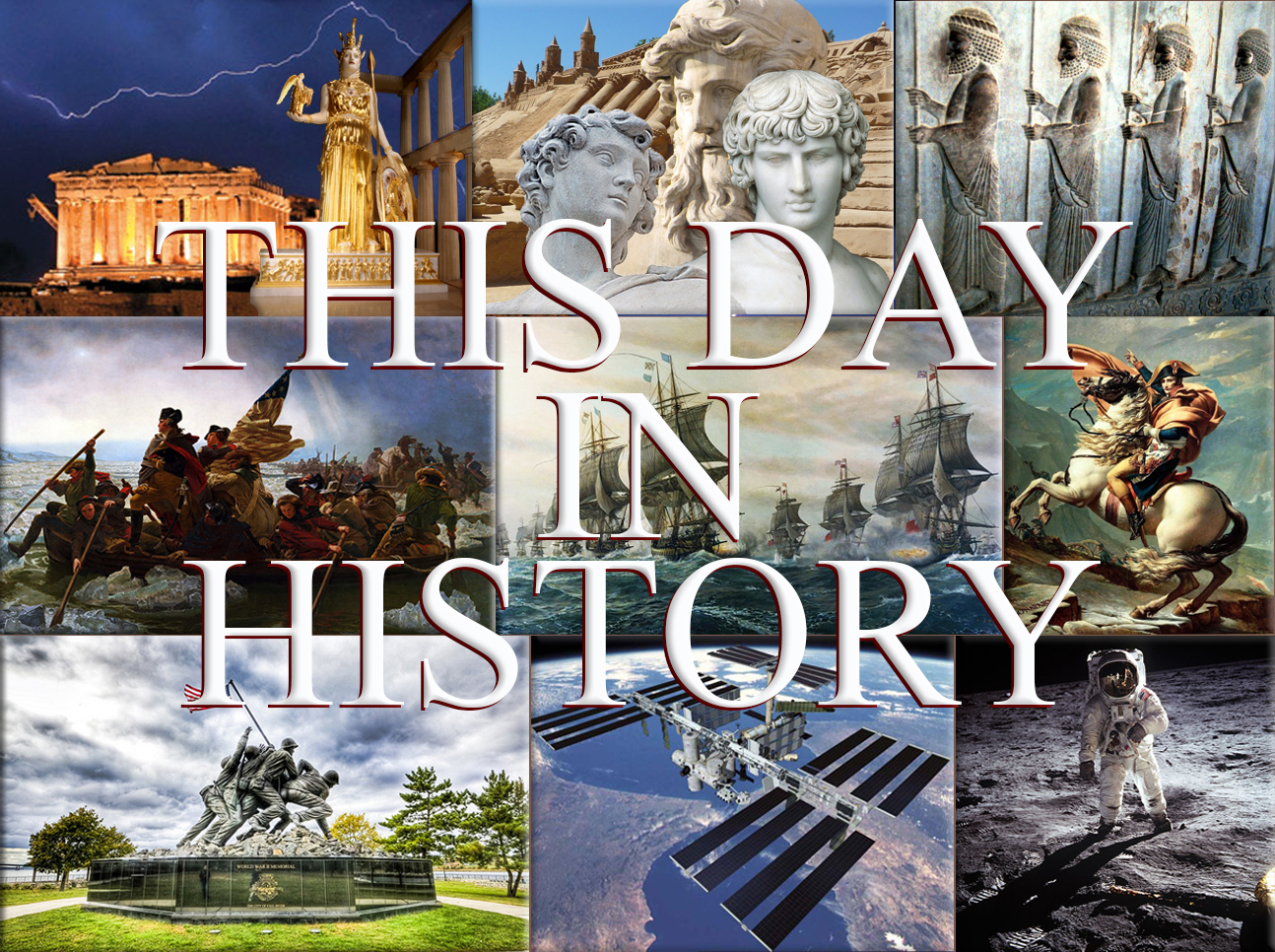
June 14th, 1216
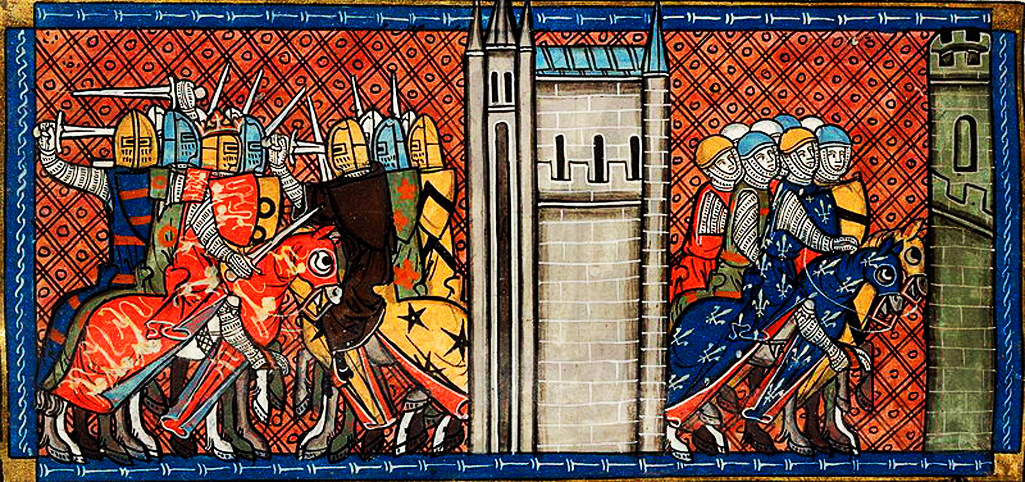
First Barons' War: Prince Louis of France captures the city of Winchester and soon conquered over half of the Kingdom of England.
Wikipedia Image: First Barons' War: (1215–17) was a civil war in the Kingdom of England between a group of rebellious barons, led by Robert Fitzwalter and supported by a French army under the future Louis VIII of France, and King John of England.
June 14th, 1276
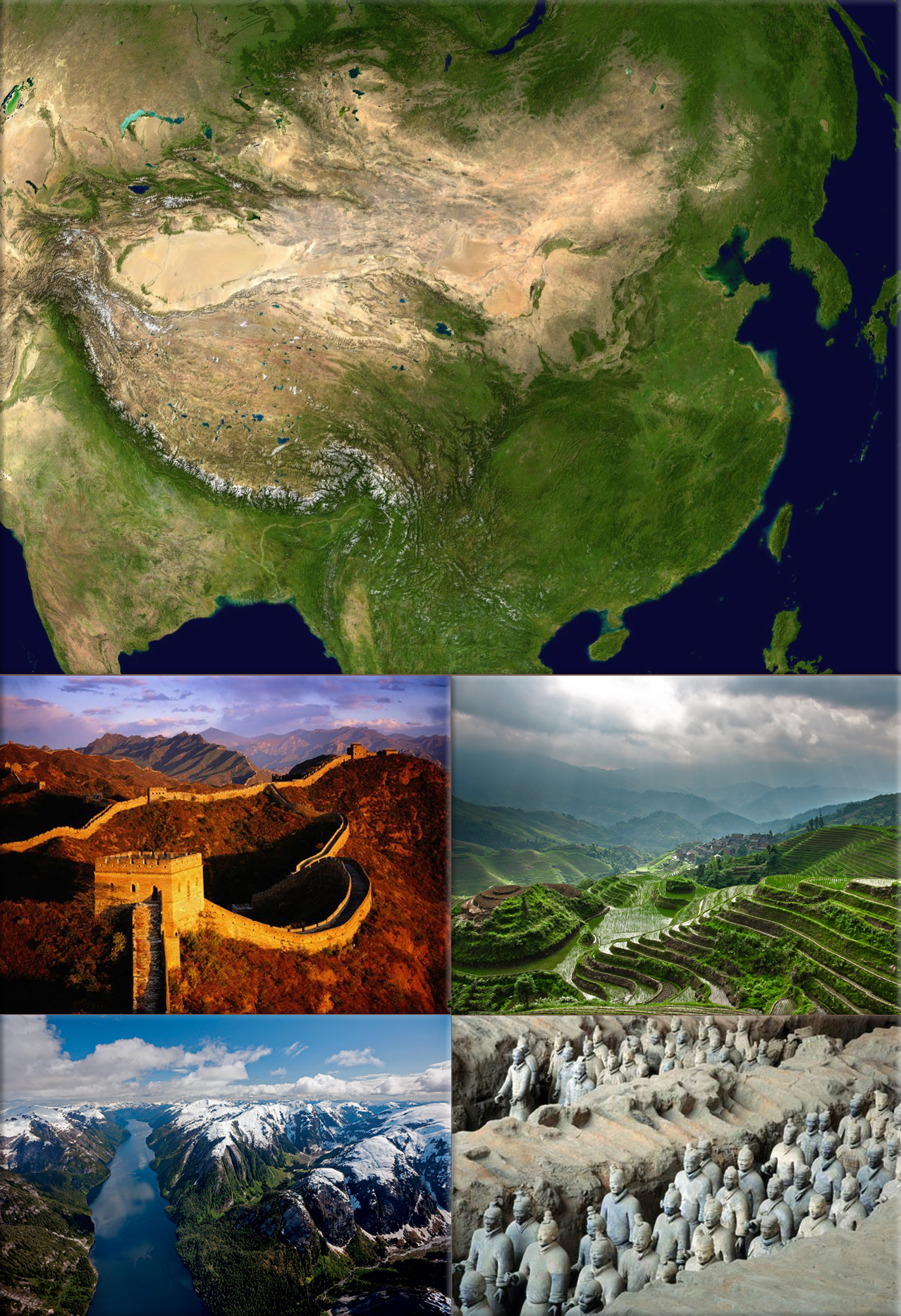
China:
1276 - While taking exile in Fuzhou in southern China, away from the advancing Mongol invaders, the remnants of the Song Dynasty court hold the coronation ceremony for the young prince Zhao Shi, making him Emperor Duanzong of Song.
Wikipedia Photo: China from NASA Wordwind Satellite; © Great Wall of China, credit National Geographic; LongJi Terrace, credit National Geographic; Great Bear Rainforest, credit Paul Nicklen, National Geographic; Platoons of clay soldiers were buried with China's first emperor, Qin Shi Huang Di, (required a labor force of 700,000 to build), credit O. Louis Mazzatenta, National Geographic.
June 14th, 1285
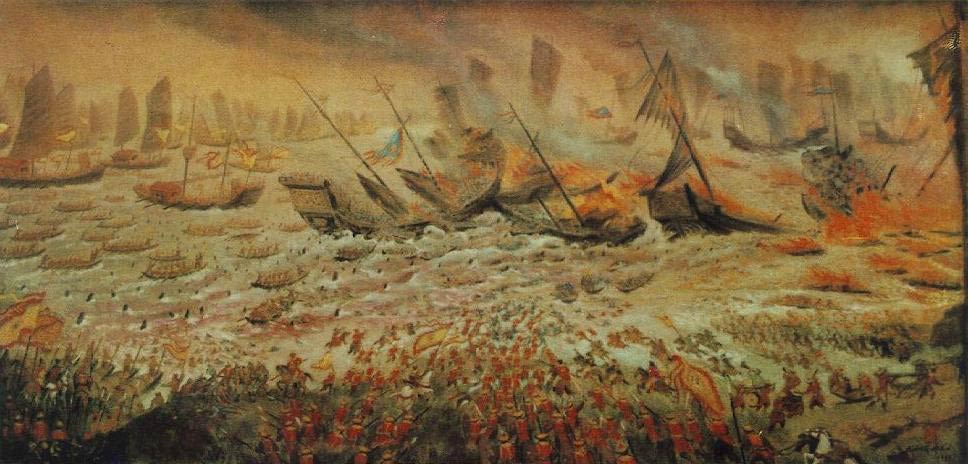
Battle at Chuong Duong: Forces led by Prince Tran Quang Khai of Vietnam's Tran Dynasty destroys most of the invading Mongol naval fleet.
Wikipedia Painting: Battle at Chuong Duong; Vietnam's Tran Dynasty destroys most of the invading Mongol naval fleet.
June 14th, 1287
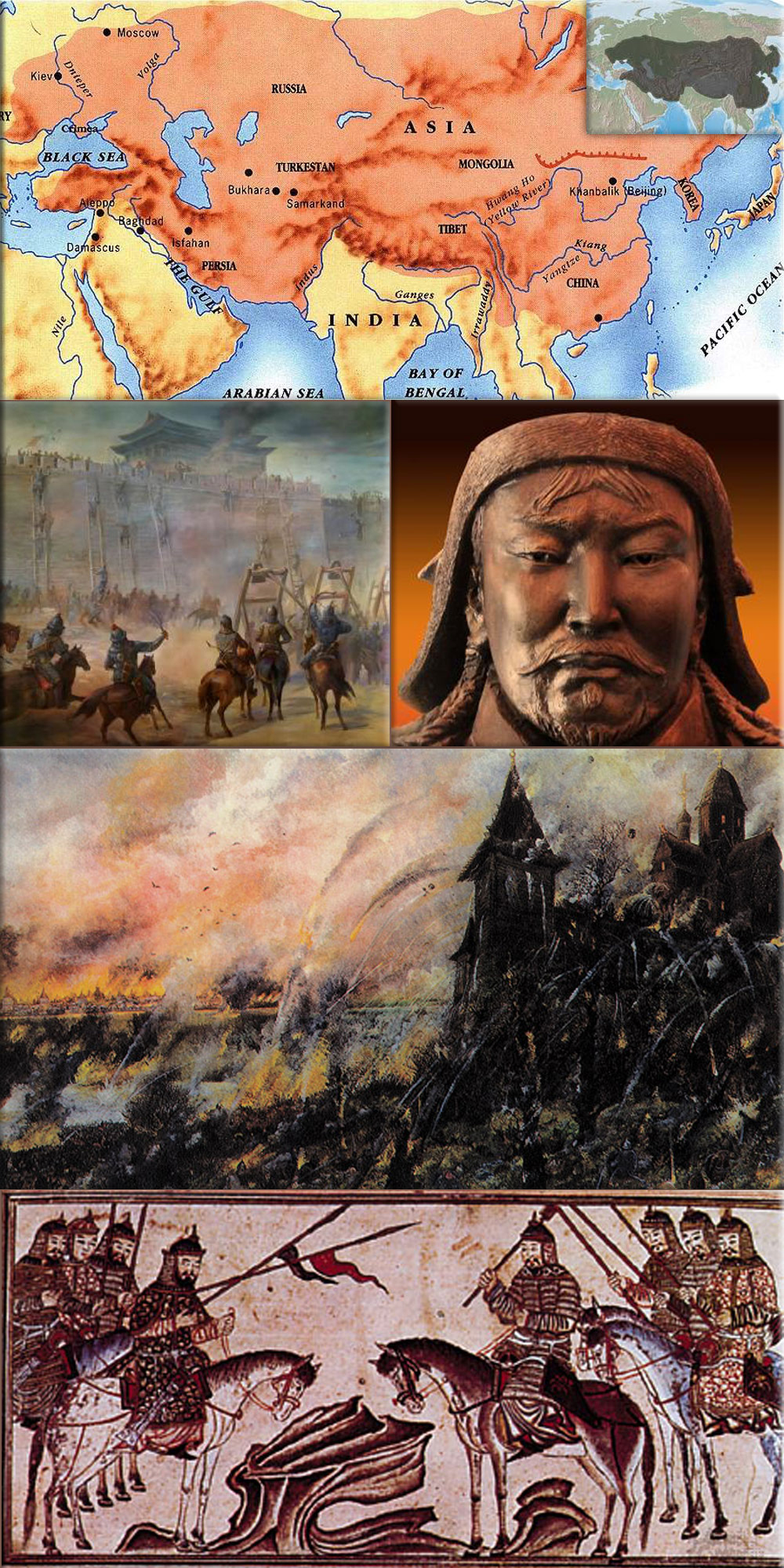
Mongol Empire:
Kublai Khan defeated the force of Nayan and other traditionalist Borjigin princes in East Mongolia and Manchuria.
Wikipedia Image: Map of Mongol Empire at its height; Genghis Khan, credit The Field Museum in Chicago; Genghis Khan various Mongolian tribes joined together in 1206; Mongol warriors was created for an Islamic history book, Rashid al-Din's History of the World of 1307, courtesy of the Edinburgh University Library, Scotland.
June 14th, 1381
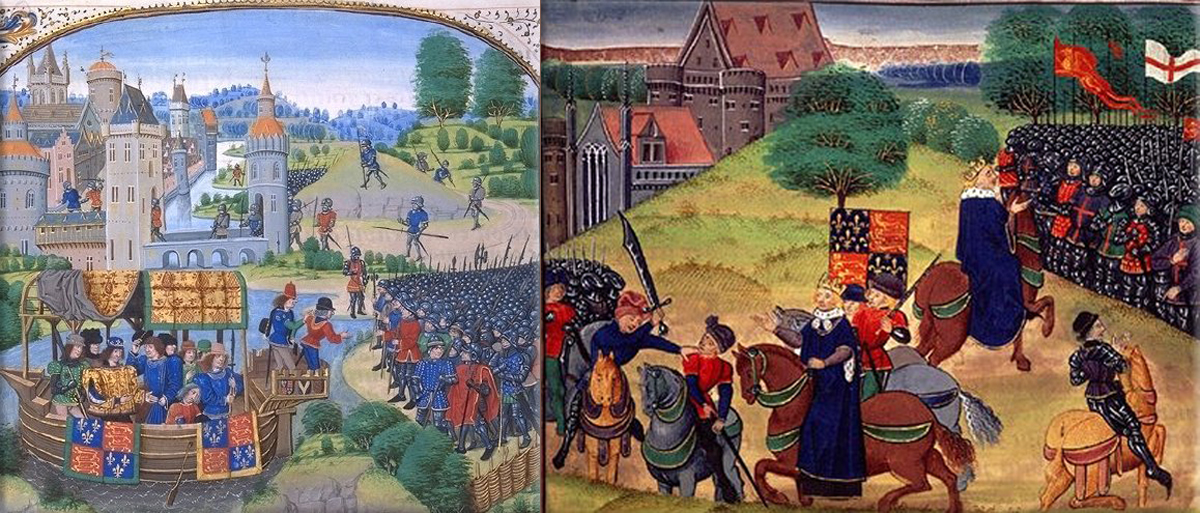
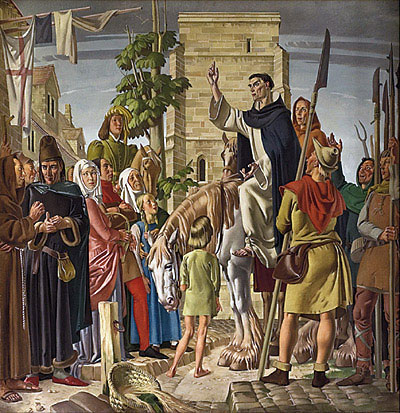
Peasants' Revolt: Richard II of England meets leaders of Peasants' Revolt on Blackheath. The Tower of London is stormed by rebels who enter without resistance.
Wikipedia Painting: Peasants' Revolt; Richard II meets the rebels in a painting from Froissart's Chronicles ● The end: Wat Tyler killed by Walworth while Richard II watches / Richard ( the king ) addresses the crowd.
Priest John Ball, a leader in the Peasants' Revolt, is hanged, drawn and quartered in the presence of King Richard II of England.
June 14th, 1645

English Civil War:
1645 - Battle of Naseby; 12,000 Royalist forces are beaten by 15,000 Parliamentarian soldiers.
Wikipedia Painting: English Civil War (1642–1651) was a series of armed conflicts and political machinations between Parliamentarians (Roundheads) and Royalists (Cavaliers);
John Milton publishes Areopagitica;
Battle of Naseby, victory of the Parliamentarian New Model Army;
Battle of Marston Moor, 1644;
"Cromwell at Dunbar", by Andrew Carrick Gow; Oliver Cromwell; King Charles I, painted by Van Dyck;
"And when did you last see your father?" by William Frederick Yeames.
June 14th, 1648
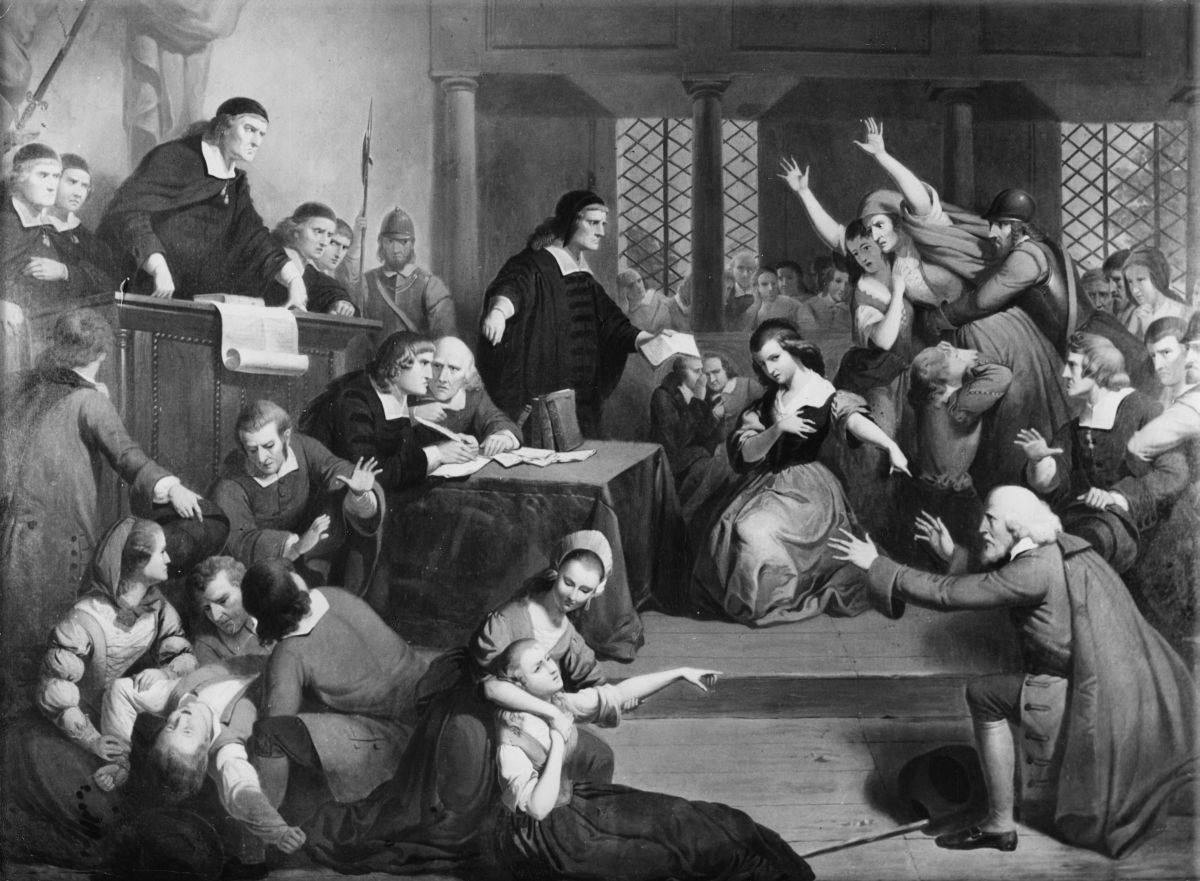
Margaret Jones is hanged in Boston for witchcraft in the first such execution for the Massachusetts colony.
Wikipedia Painting: Salem witch trials; were a series of hearings and prosecutions of people accused of witchcraft in colonial Massachusetts, between February 1692 and May 1693.
June 14th, 1775
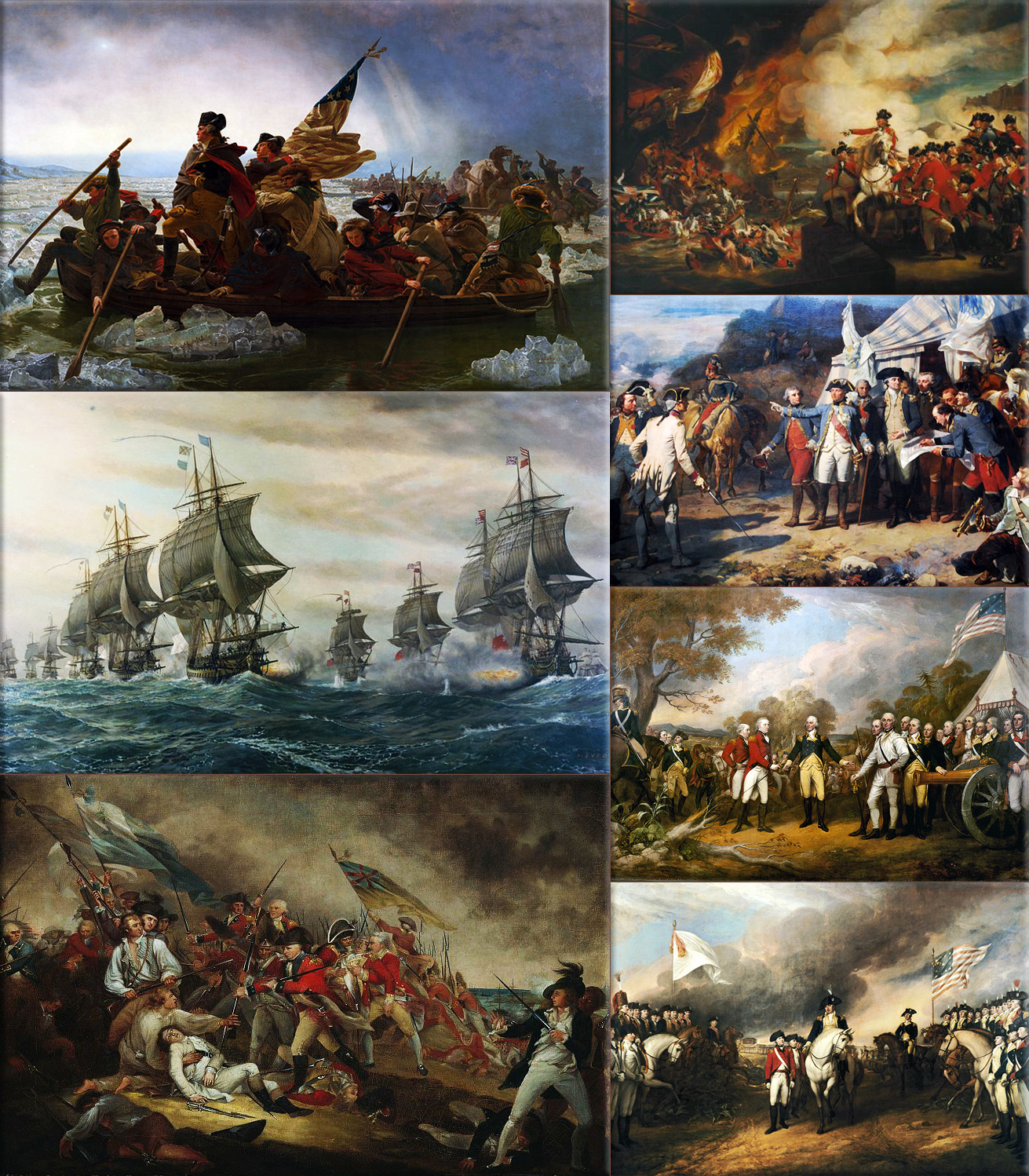
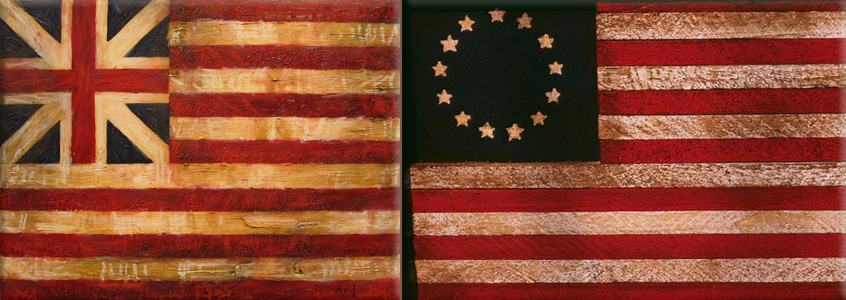
American Revolutionary War:
1775 - The Continental Army is established by the Continental Congress, marking the birth of the United States Army.
1777 - The Stars and Stripes is adopted by Congress as the Flag of the United States.
Wikipedia Paintings: Washington Crossing the Delaware, by Emanuel Leutz; Battle of the Chesapeake, French (left) and British (right) lines; Battle of Bunker Hill, The Death of General Warren at the Battle of Bunker Hill by John Trumbull; The Defeat of the Floating Batteries at Gibraltar, September 13, 1782, by John Singleton Copley; Washington and the Comte de Rochambeau at Yorktown, 1781; "The surrender at Saratoga" shows General Daniel Morgan in front of a French de Vallière 4-pounder; Surrender of Cornwallis at Yorktown by (John Trumbull, 1797).
Grand Union - Stars and Stripes Flag
June 14th, 1789
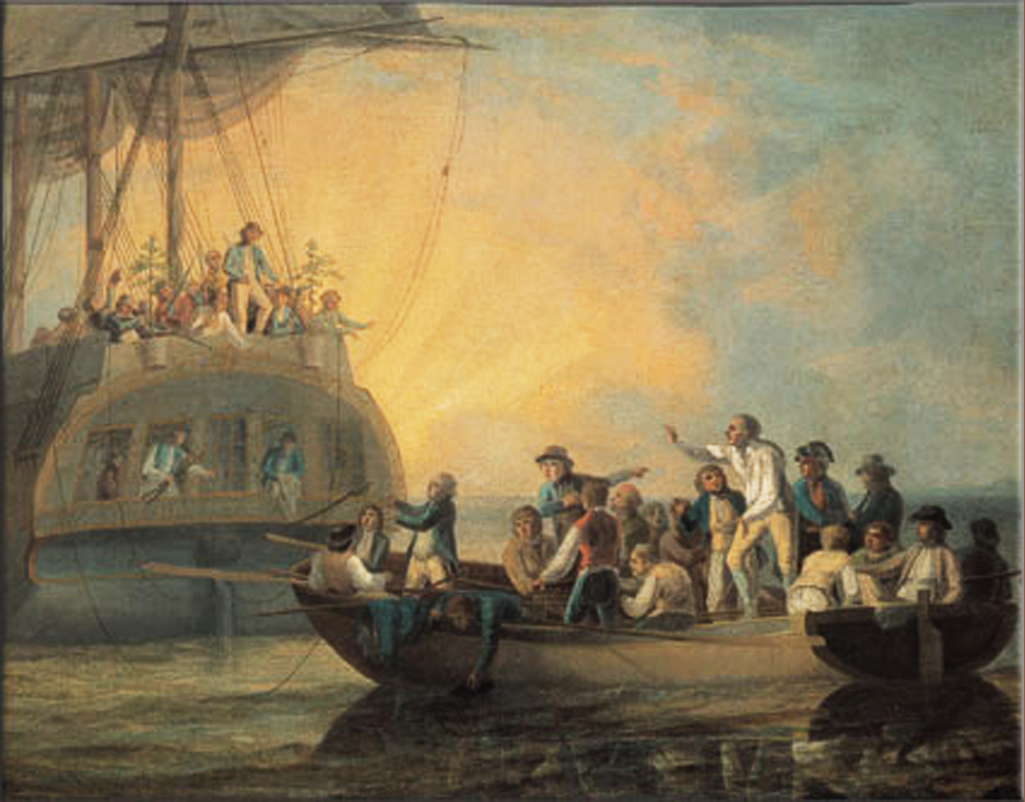
Mutiny on the Bounty: HMS Bounty mutiny survivors including Captain William Bligh and 18 sailors reach Timor after a nearly 7,400 km (4,600 mi) journey in an open boat.
Wikipedia Painting: Mutiny on the Bounty; Mutiny aboard the British Royal Navy ship HMS Bounty on 28 April 1789. (The mutiny was led by Fletcher Christian against commanding officer Captain William Bligh.) By Robert Dodd.
June 14th, 1789

Whiskey distilled from maize is first produced by American clergyman the Rev Elijah Craig. It is named Bourbon because Rev Craig lived in Bourbon County, Kentucky.
Wikipedia Photo: Elijah Craig Bourbon named, because Rev Craig lived in Bourbon County, Kentucky, credit Ryan Hyde, Flickr.
June 14th, 1800

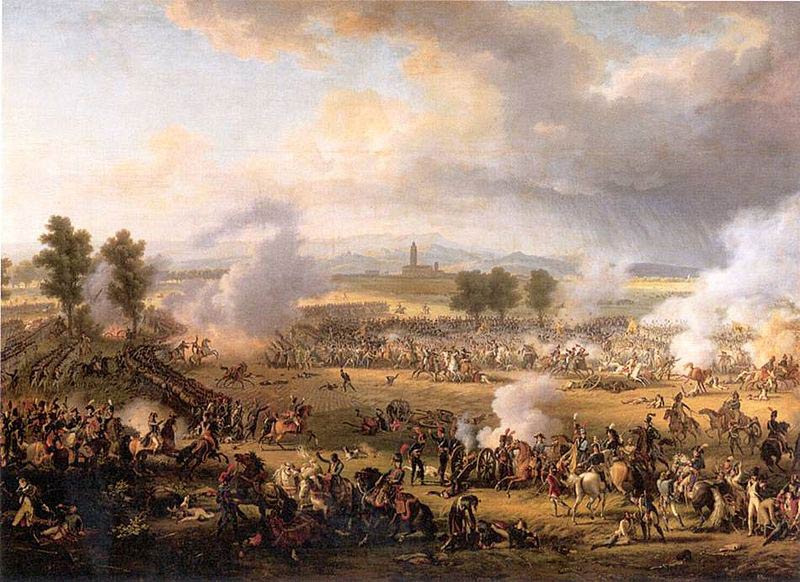
French Revolutionary Wars / Napoleonic Wars:
1800 - Battle of Marengo; The French Army of First Consul Napoleon Bonaparte defeated the Austrians in Northern Italy and re-conquered Italy.
1807 - Battle of Friedland; in Poland (modern Russian Kaliningrad Oblast) Emperor Napoleon I’s French Grande Armee defeated the Russian Army ending the War of the Fourth Coalition.
Wikipedia Painting: Battle of Trafalgar: The British HMS Sandwich fires to the French flagship Bucentaure (completely dismasted) in the battle of Trafalgar;
Napoleon in Berlin (Meynier). After defeating Prussian forces at Jena, the French Army entered Berlin on 27 October 1806;
Battle of the Bridge of Arcole Napoleon Bonaparte leading his troops over the bridge of Arcole, by Horace Vernet;
Napoleon as King of Italy (Appiani);
Napoleon Crossing the Alps (David). In 1800 Bonaparte took the French Army across the Alps, eventually defeating the Austrians at Marengo;
Charge of the Russian Imperial Guard cavalry against French cuirassiers at the Battle of Friedland, 14 June 1807;
Battle of Borodino as depicted by Louis Lejeune. The battle was the largest and bloodiest single-day action of the Napoleonic Wars;
Napoleon's withdrawal from Russia, a painting by Adolph Northen;
Wellington at Waterloo by Robert Alexander Hillingford;
Napoleon is often represented in his green colonel uniform of the Chasseur à Cheval, with a large bicorne and a hand-in-waistcoat gesture.
Battle of Marengo; The French Army of First Consul Napoleon Bonaparte defeated the Austrians in Northern Italy and re-conquered Italy.
June 14th, 1846
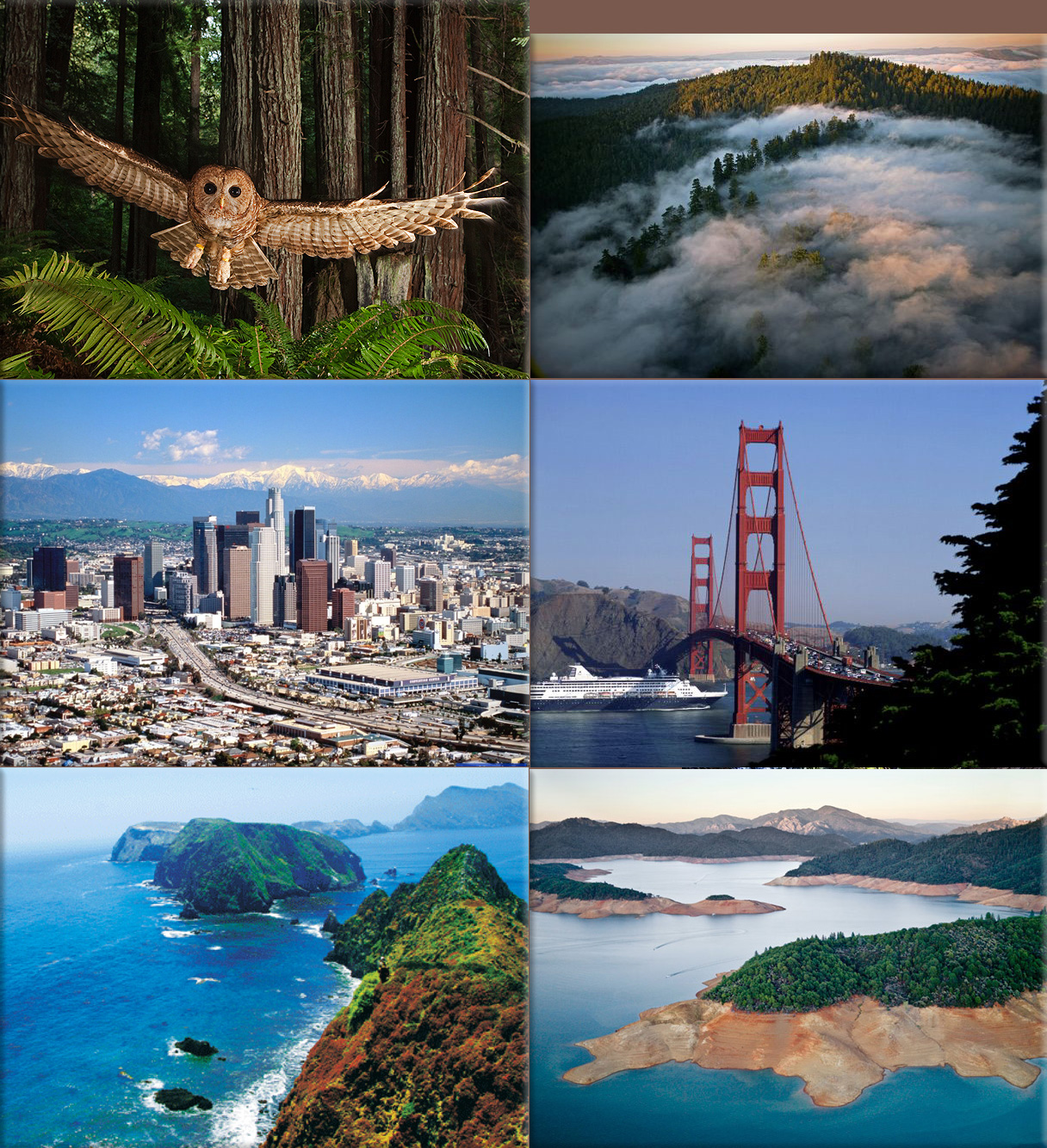
Bear Flag Revolt: Anglo settlers in Sonoma, California, start a rebellion against Mexico and proclaim the California Republic.
Wikipedia Photo: The Super Trees, by Michael Nichols; Fog shrouds redwoods in California's Humboldt Redwoods State Park, by Michael Nichols; Los Angeles; A cruise ship under the Golden Gate Bridge, by Rubberball / Getty Images; Anacapa Island, in Channel Islands National Park, 15 miles (24 kilometers) off the Malibu Coast, by Michael Gaines; Dams, pumps, and canals can’t stave off a water crisis, by Edward Burtynsky. credit National Gergraphics.
June 14th, 1863
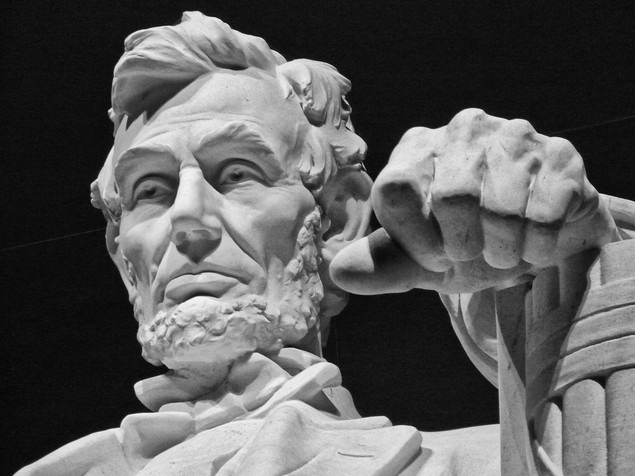
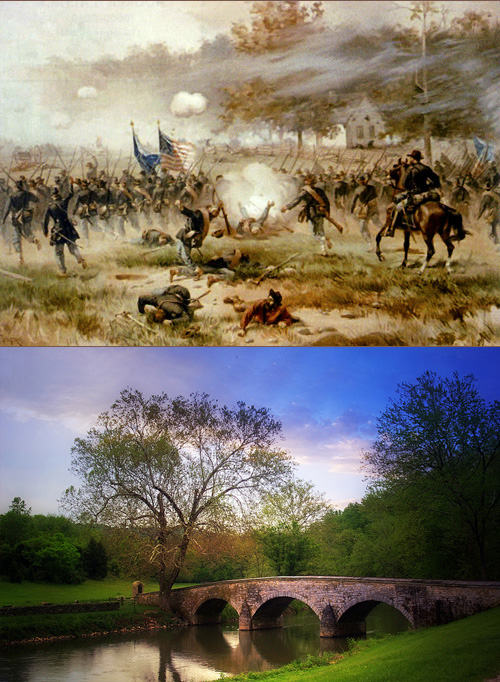
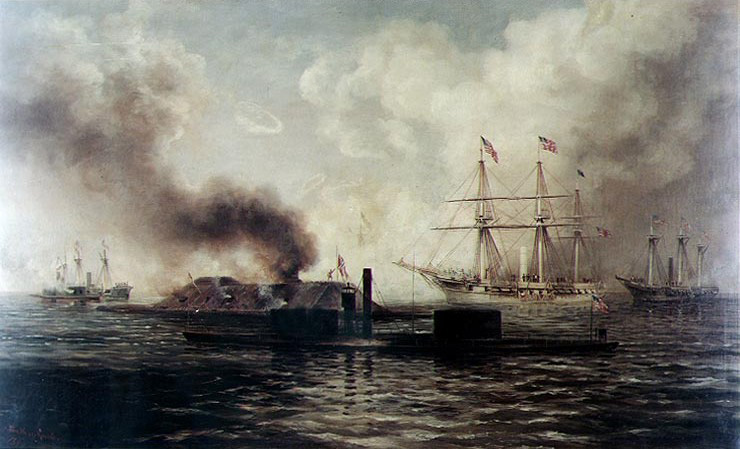
American Civil War:
1863 - Second Battle of Winchester; Union garrison is defeated by the Army of Northern Virginia in the Shenandoah Valley town of Winchester, Virginia.
1863 - Siege of Port Hudson; Second Assault on the Confederate works.
Wikipedia Image: ● Lincoln Memorial; an American national monument built to honor the 16th President of the United States, Abraham Lincoln - located on the National Mall in Washington, D.C. across from the Washington Monument.
● The northern army led by George McClellan and the southern army led by Robert E. Lee met at Antietam Creek, Maryland in September, 1862. It was a bloody battle where 13,000 Confederates and 12,000 Union troops died in just one day. McClellan had hesitated to attack before the battle thus letting the southern troops regroup. Also, he had saved reserves and refused to use them at the end of the battle thinking that Lee was holding reserves for a counterattack, even though those reserves didn't exist. The Union victory stopped Lee's northward advance and was a turning point in the war.
● Battle of Antietam / Stone Bridge at Antietam Battlefield - Sharpsburg, Maryland
● Battle of Mobile Bay (1890) by Xanthus Russell Smith.
● Although photography was still in its infancy, war correspondents produced thousands of images, bringing the harsh realities of the frontlines to those on the home front in a new and visceral way. The Atlantic.
June 14th, 1900
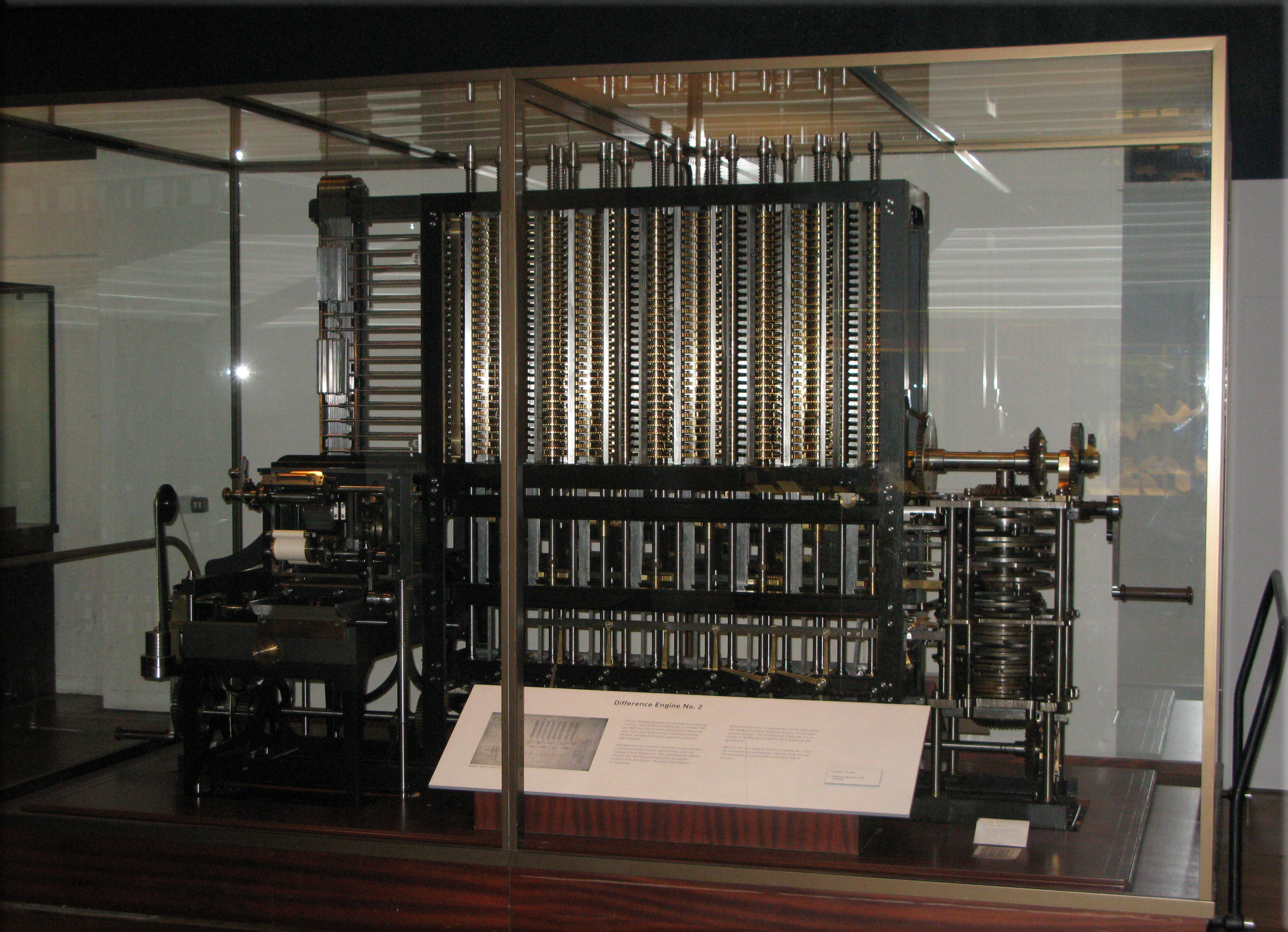
Charles Babbage proposes a difference engine in a paper to the Royal Astronomical Society entitled "Note on the application of machinery to the computation of astronomical and mathematical tables".
Wikipedia Photo: Charles Babbage proposes the difference engine - the London Science Museum's difference engine, built from Babbage's design.
June 14th, 1900
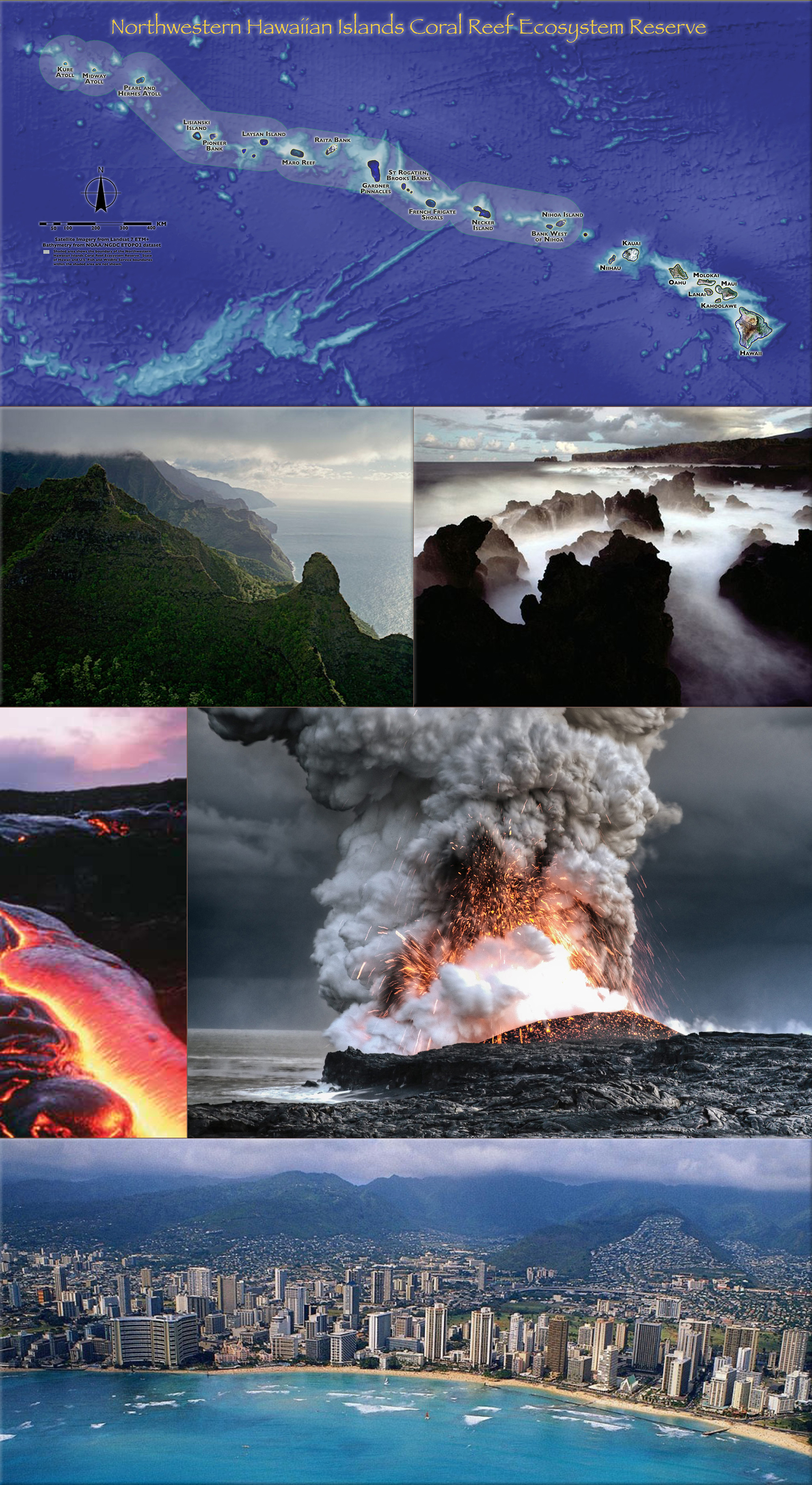
Hawaii becomes a United States territory.
Wikipedia Hawaiian Islands, NOAA Satellite; Na Pali Coast, Kaua'i, by Diane Cook and Len Jenshel, National Geographic; Volcanic Coast, Haleakala National Park, by Paul Chesley, National Geographic; Living Earth - Pu'u 'O'o crater, by Frans Lanting; Volcano erupting on the Big Island in Hawaii in July by Alain Barbezat for National Geographic; The blue ocean line of Honolulu - an aerial view.
Hawaiian Islands (Hawaiian: Mokupuni o Hawai‘i) are an archipelago of eight major islands, several atolls, numerous smaller islets, and undersea seamounts in the North Pacific Ocean, extending some 1,500 miles (2,400 kilometres) from the island of Hawaiʻi in the south to northernmost Kure Atoll (the northwesternmost island in Hawaii is Green Island, which is joined to the Kure Atoll).
June 14th, 1940
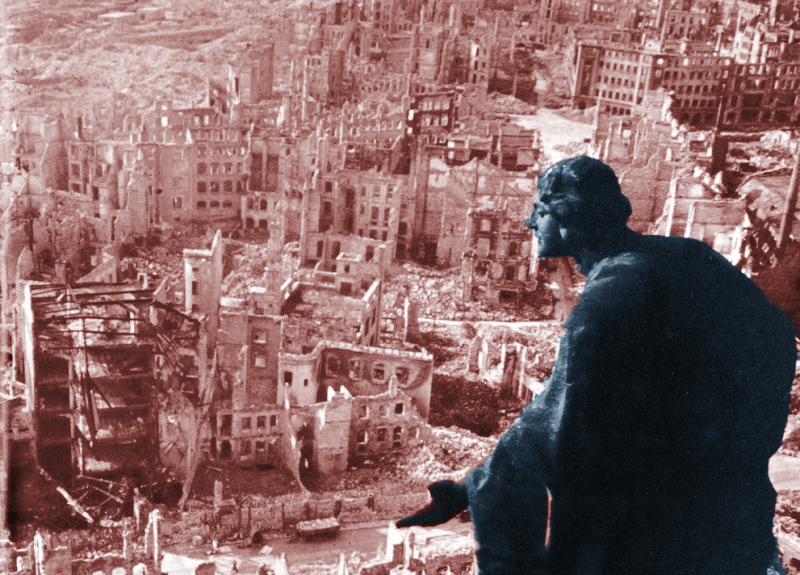

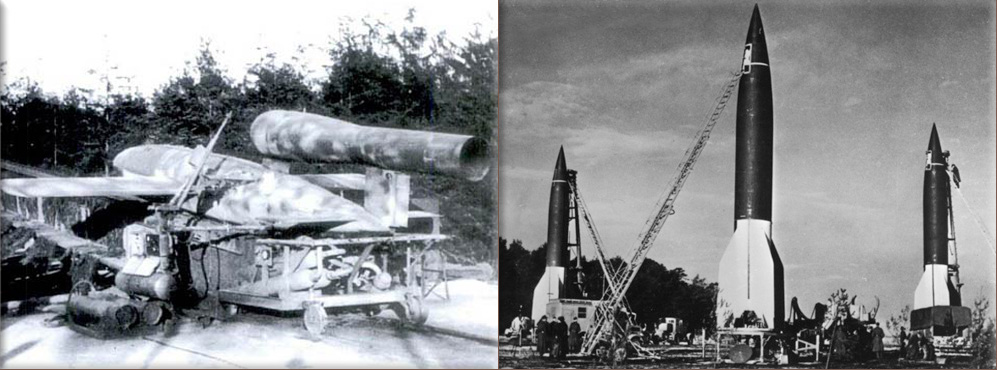
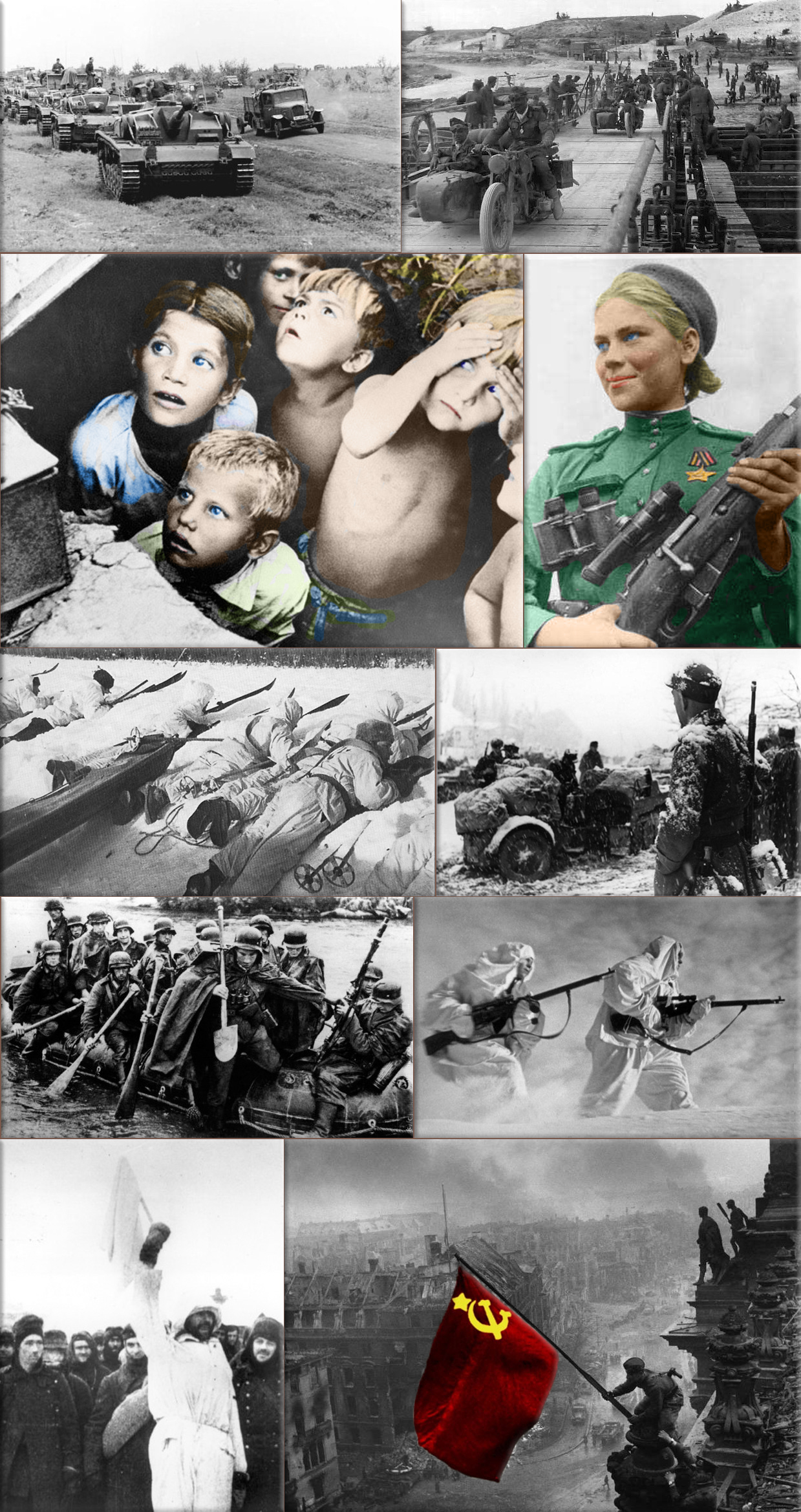
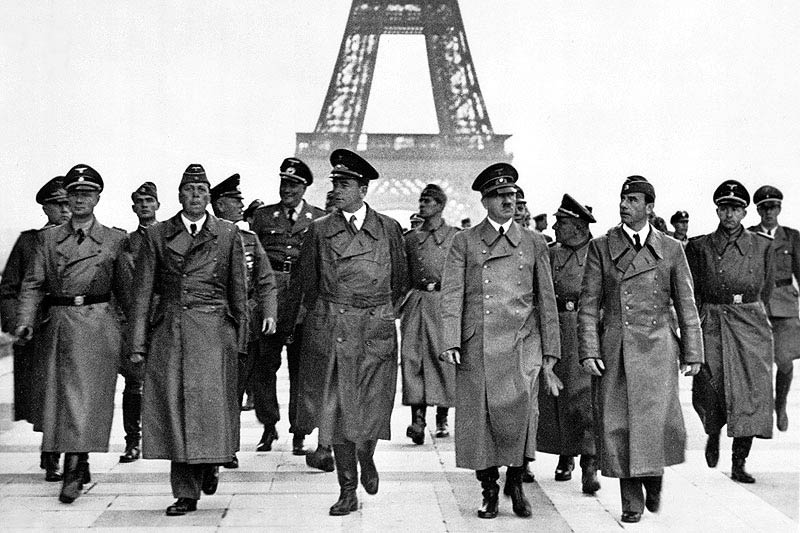
World War II:
1940 - Paris falls under German occupation, and Allied forces retreat.
1940 - Soviet ultimatum to Lithuanian; The Soviet Union presents an ultimatum to Lithuania resulting in Lithuanian loss of independence.
1944 - Operation Perch; After several failed attempts, the British Army abandons its plan to capture the German-occupied town of Caen.
1945 - Battle of Bessang Pass; Filipino troops of the 15th, 66th and 121st Infantry Regiment, Philippine Commonwealth Army, USAFIP-NL liberate the captured in Ilocos Sur in Northern Luzon.
Wikipedia Photo: Bombing of Dresden in World War II; August Schreitmüller's sculpture 'Goodness' surveys Dresden after a firestorm started by Allied bombers in 1945.
USS Bunker Hill was hit by kamikazes piloted by Ensign Kiyoshi Ogawa and another airman on 11 May 1945. 389 personnel were killed or missing from a crew of 2,600; Ensign Kiyoshi Ogawa, who flew his aircraft into the USS Bunker Hill during a Kamikaze mission on 11 May 1945; Kamikaze Missions - Lt Yoshinori Yamaguchi's Yokosuka D4Y3 (Type 33 Suisei) "Judy" in a suicide dive against USS Essex. The dive brakes are extended and the non-self-sealing port wing tank is trailing fuel vapor and/or smoke 25 November 1944.
German V1 flying-bomb and V2 Rockets - Preparations for a Salvo Launch of V-2 Rockets in the Heidelager near Blizna (Poland) (1944), credit German History in Documents and Images GHDI.
Eastern Front (World War II); Germans race towards Stalingrad. August 1942; Soviet children during a German air raid in the first days of the war, June 1941, by RIA Novosti archive; Soviet sniper Roza Shanina in 1944. About 400,000 Soviet women served in front-line duty units Caucasus Mountains, winter 1942/43; Finnish ski patrol: the invisible enemy of the Soviet Army with an unlimited supply of skis; Men of the German Engineers Corps cross a river which is swollen after the first autumn rains, to strengthen bridges linking the German positions on the central front in Russia. by Keystone / Getty Images. October 1942; Russian snipers fighting on the Leningrad front during a blizzard. Photo by Hulton Archive / Getty Images, 1943; German soldiers surrendering to the Russians in Stalingrad, the soldier holding the white flag of surrender is dressed in white so that there could be no doubt of his intentions, a Russian soldier is on the right of the photograph. by Keystone / Getty Images, January 1943.
Paris falls under German occupation, and Allied forces retreat.
June 14th, 1940
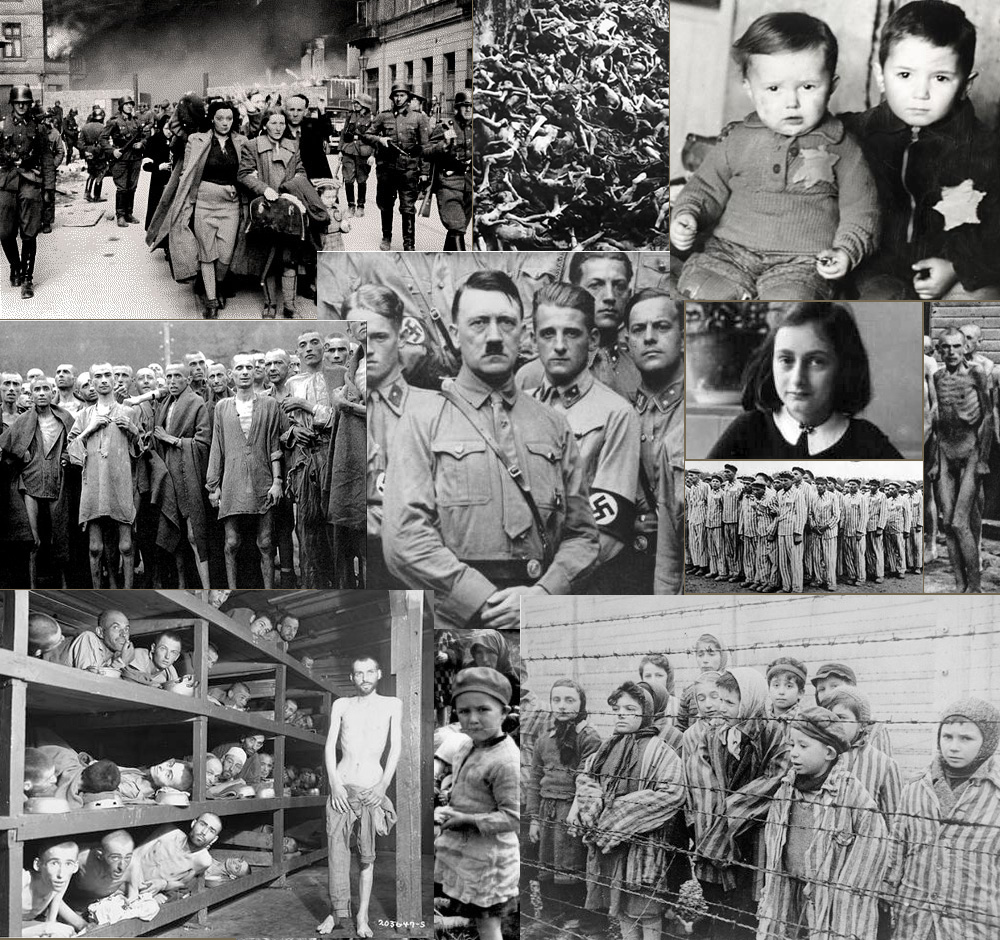
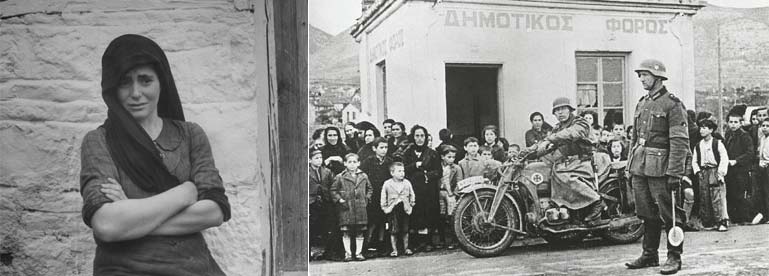
World War II: Holocaust;
1940 - A group of 728 Polish political prisoners from Tarnów become the first residents of the Auschwitz concentration camp.
1941 - June deportation; the first major wave of Soviet mass deportations and murder of Estonians, Latvians and Lithuanians.
Wikipedia Photo: World War II, The Holocaust. Sources: United States Holocaust Memorial Museum USHMM, History 1900s, Internet Masters of Education Technology IMET, Techno Friends, Veterans Today, Concern.
Distomo, Greece, November 1944. Woman during the memorial service for the victims of the massacre that took place four months before (which included her mother). credit Greece.org ● Greek civilians look on as the Germany army makes its way to Thessaloniki in April 1941. credit Getty Images.
June 14th, 1947
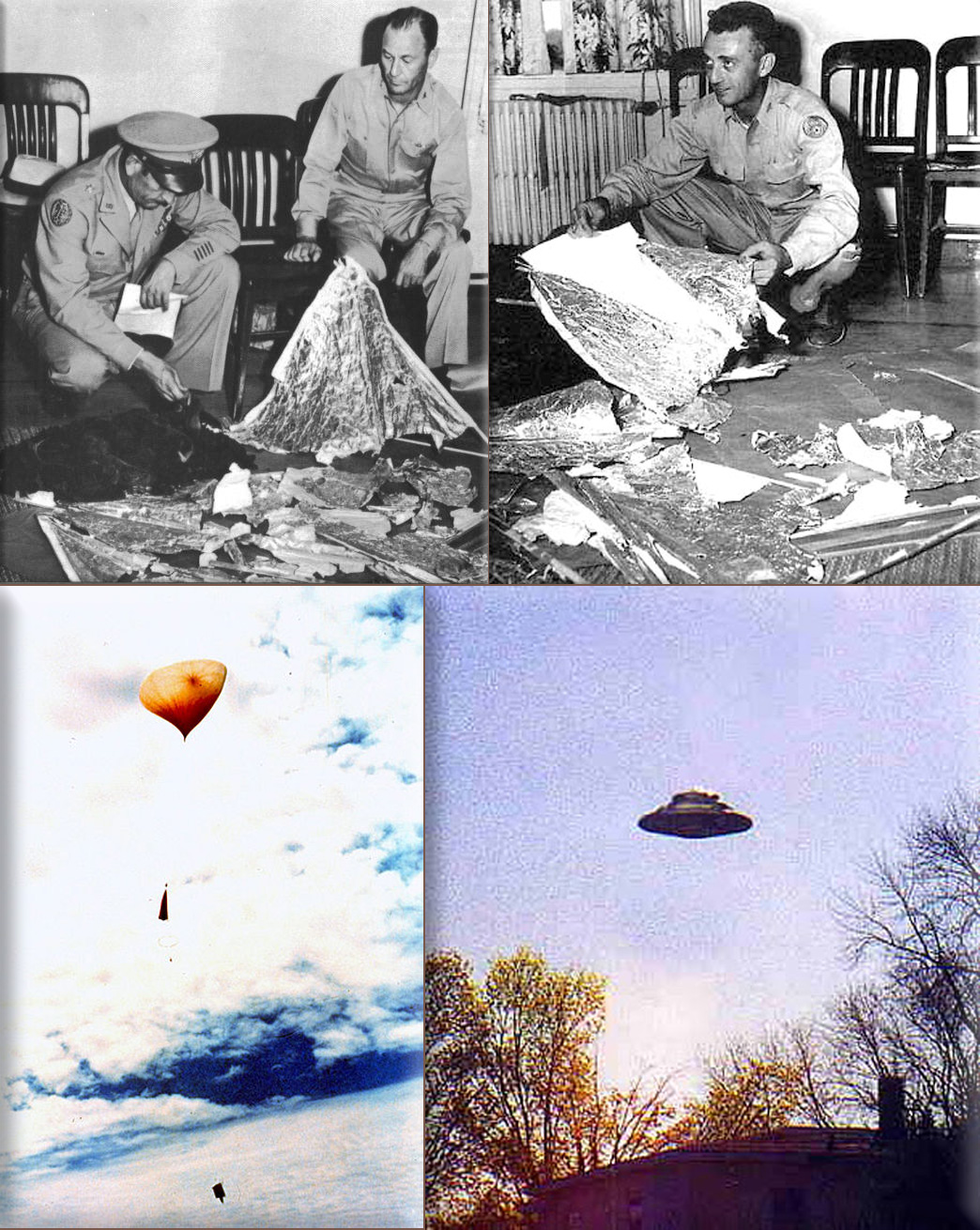
Roswell UFO incident: A supposed UFO crash lands in Roswell, New Mexico.
Wikipedia Image: Roswell UFO incident, credit alien-ufo-research; A NOAA weather balloon just after launch; UFO unexplained.
June 14th, 1951

Remington Rand's UNIVAC I computer is dedicated by the United States Census Bureau.
Wikipedia Picture: UNIVAC I; Univac Operator's Console and Operator ● The LLNL Univac Console Area ● The Acoustic Memory Units. credit Computer History.
June 14th, 1962
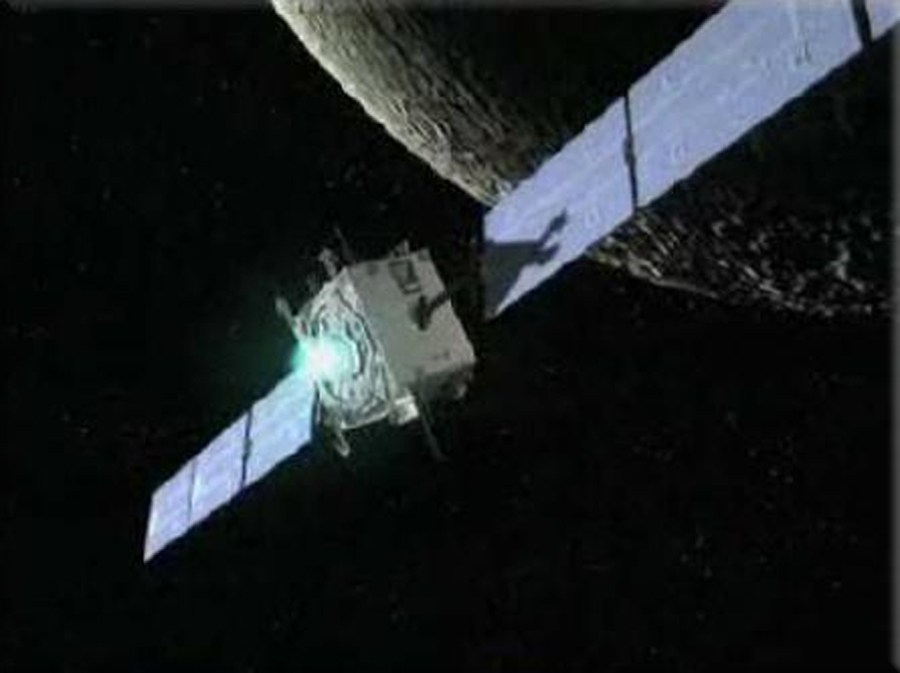
European Space Research Organisation is established in Paris – later becoming the European Space Agency.
Wikipedia Image: European Space Research Organisation (ESRO - CERS / ESA).
June 14th, 1967

Mariner program: NASA launches the Mariner 5 is launched toward Venus.
Wikipedia Image: Mariner 10 - Mercury, NASA.
June 14th, 1982
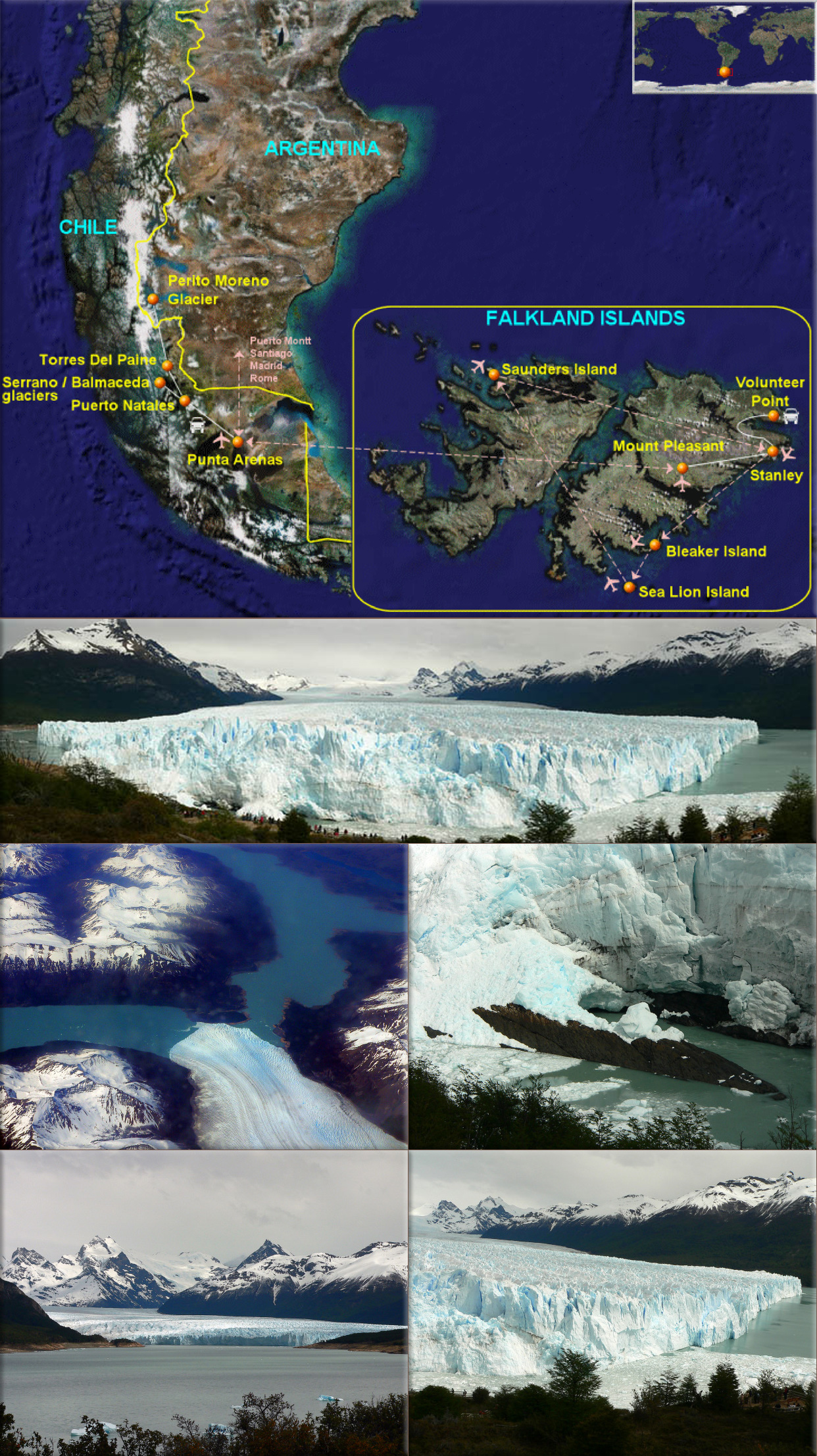
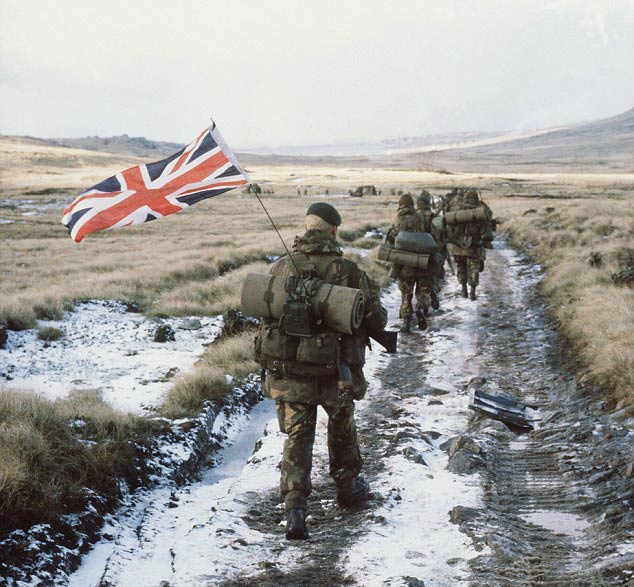
Falklands War ends: Argentine forces in the capital Stanley unconditionally surrender to British forces.
Wikipedia Image: Falkland Islands; Map Falkland Islands and Patagonia; Perito Moreno glacier and Lago Argentino, credit Wideview.it (Falkland Islands and Patagonia), New York Times.
June 14th, 2002

Near-Earth asteroid 2002 MN misses the Earth by 75,000 miles (121,000 km), about one-third of the distance between the Earth and the Moon.
Wikipedia Image: Illustration showing asteroids orbiting the sun. Apollo asteroids like 2014 DX110 have orbits that take them from inside the asteroid belt at farthest to approximately Earth’s distance from the sun when closest. (NASA/ JPL-Caltech)
June 14th, 2014
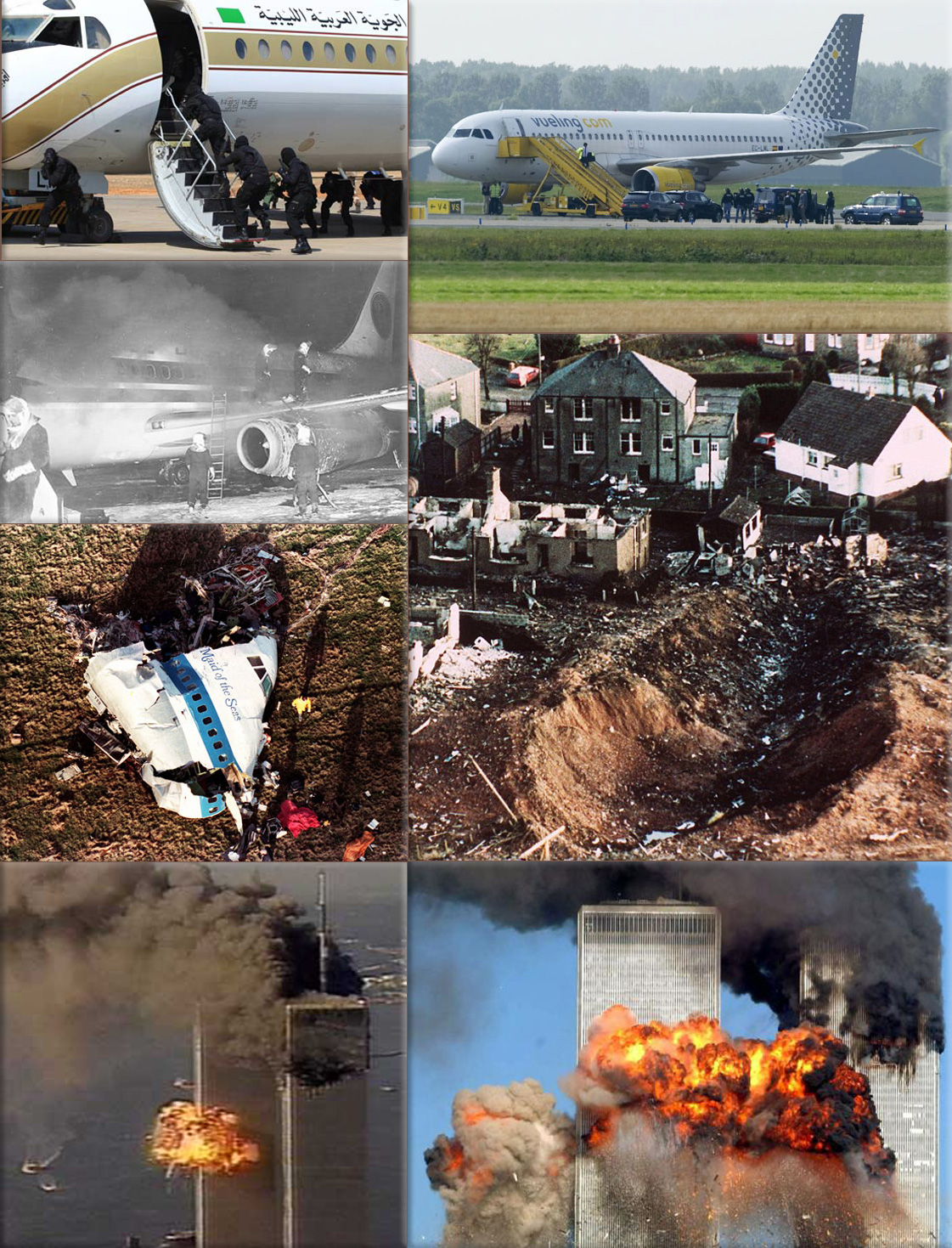
Aircraft hijacking:
2014 - Ukrainian Air Force Ilyushin Il-76 shoot-down; A Ukraine military Ilyushin Il-76 airlifter is shot down, killing all 49 people on board.
1985 - TWA Flight 847 is hijacked by Hezbollah shortly after take-off from Athens, Greece.
Wikipedia Photo: Hijacked Sudan passenger jet lands in Libya, August 27, 2008; Amsterdam false alarm revives airplane hijacking memories, Passengers leave a Vueling plane at a field near Amsterdam Airport after a hijack scare last week that led the Netherlands to scramble F-16 fighter jets, September 2, 2012 Reuters; Egypt Air flight 648 was hijacked in November 1985 by the terrorist Abu Nidal organisation, credit AP; Cockpit section of Pan Am 103 wreckage following a mid-air explosion, December 21, 1988; 747 Pan Am airliner that exploded and crashed over Lockerbie, Scotland, with 259 passengers on board in 1988; Debris lies in a deep gash through the town of Lockerbie, Scotland, caused by the crash of Pan Am flight 103, credit AP; Flight 175 hits the WTC South Tower. The picture was taken from a traffic helicopter. credit: WABC 7/ Salient Stills; Hijacked United Airlines Flight 175 from Boston crashes into the South Tower of the World Trade Center and explodes at 9:03 a.m. on September 11, 2001 in New York City, credit Spencer Platt / Getty Images.
June 14th, 2017
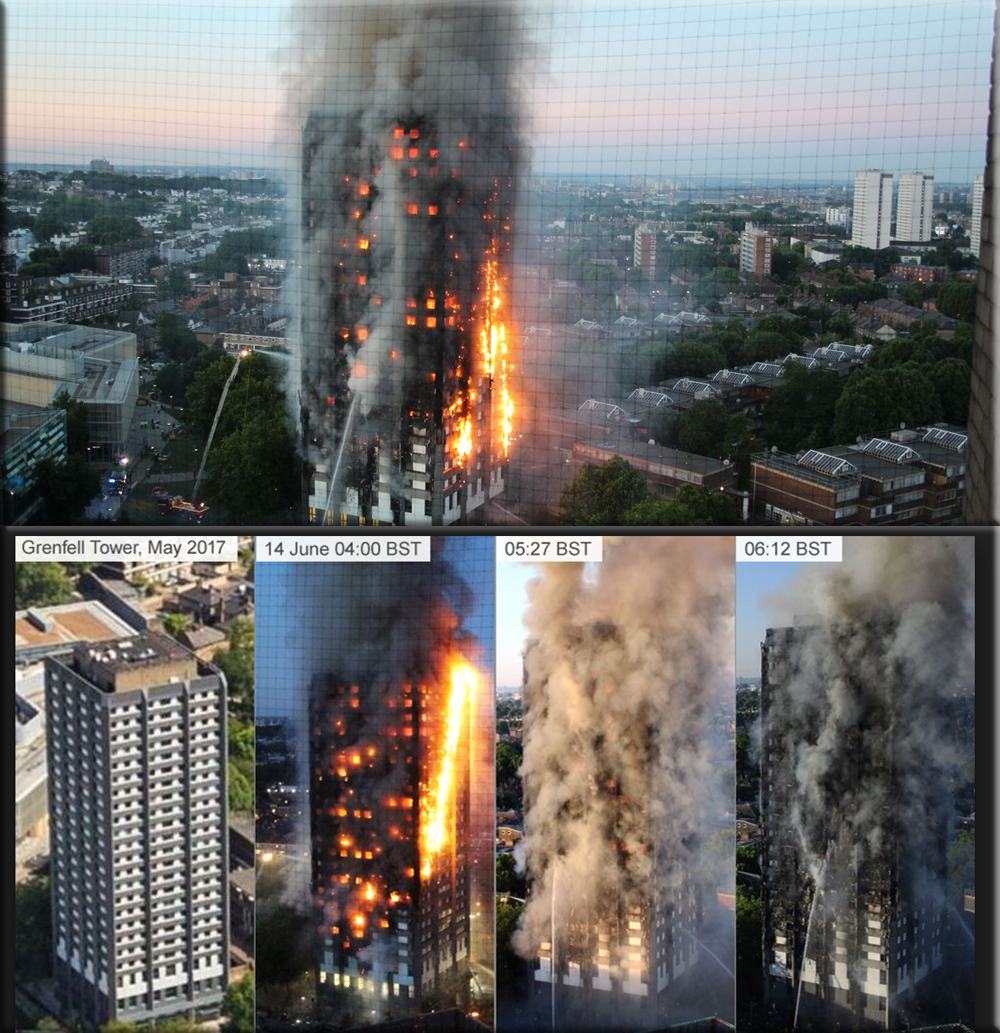
Grenfell Tower fire: London: A fire in a high-rise apartment building in North Kensington leaves at least 80 people dead and another 74 injured.
Wikipedia Image: Grenfell Tower fire: London: A fire in a high-rise apartment building in North Kensington leaves at least 80 people dead and another 74 injured.
